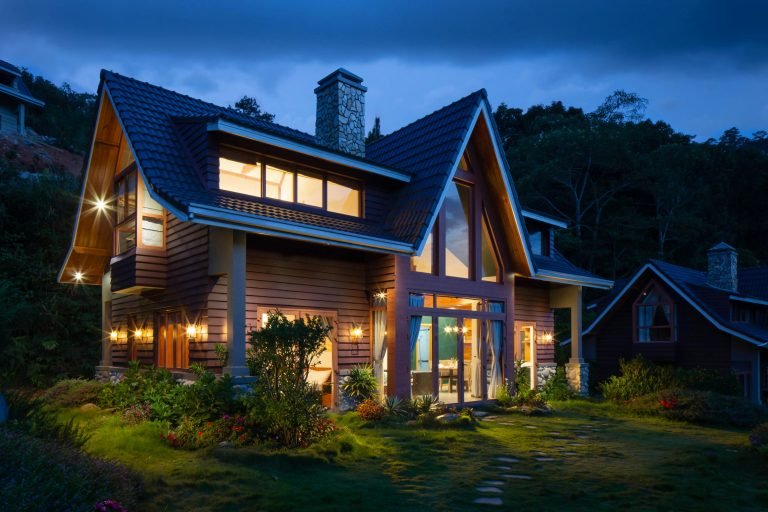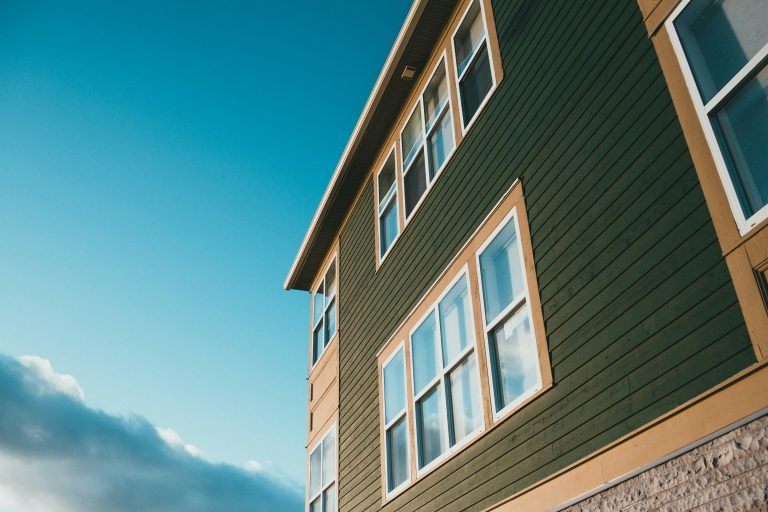We Connect You With Local Siding Companies
SIDING CONTRACTORS BATON ROUGE
Grow your knowledge on everything siding and get connected with a pro who can get the job done right
Looking For Siding Companies in Baton Rouge? Wondering if it’s Time for Some House Siding Repair?
No matter what type of siding material your house may have (e.g., vinyl, wood, fiber cement, etc.), here are a few signs that it’s time for some siding repair or replacement:
- Visible Damage
- Mildew or Mold Growth
- Fading or Discoloration
- Rot or Decay
- Peeling or Bubbling Paint
- Potentially Even Increased Energy Bills
Regularly inspect the outside of your house, and if you see any signs of deterioration or damage, consider what might need to be done to help prevent further issues. If you think your siding may need replacement, consult with a professional contractor or siding specialist as this can provide valuable insights and guidance.
We would be happy to connect you with the pros who can help!
Request a Free Siding Quote
- Required Fields
Why Choose Us and Our Partners
Here at Siding Contractors Baton Rouge, we believe that all our work should be done to the highest standard. Mediocrity is not an option. That is why we very carefully choose which Baton Rouge contractors to partner with. You deserve the very best, and together with our partners, we will give that.
House Siding 101: A Mini Guide to Choosing the Right Siding for Your Home
The outside of your home plays a BIG role in overall curb appeal, house protection, and energy efficiency. Good house siding not only serves as the first line of defense against the elements and pests, it can also have a positive effect on property value. With the wide variety of siding materials currently available on the market, choosing the right one for you can be tough.
In this mini guide, we’ll cover the basics of house siding to help you make an informed decision for your home.

1. Types of Siding Materials:
– Vinyl Siding: Vinyl siding is one of the most popular choices due to its affordability and low maintenance. The fact that it is also available in many colors and styles makes it the choice for many buyers.
– Wood Siding: Wood siding offers an iconic natural look that for some is a must-have (types of wood siding available include: cedar, pine, and redwood). Unfortunately, wood siding is more costly than vinyl siding, and it is high maintenance.
– Aluminum Siding: Aluminum siding is known for being pest-proof, fire resistant, and rot-proof, among other things. It is also sustainable due to the fact that it can be recycled. It requires minimal maintenance and comes in various textures and patterns.

– Brick Siding: Brick siding provides a unique beauty to a home. It is low maintenance and unfortunately, costly.
– Fiber Cement Siding: Fiber cement siding combines durability and versatility (it does require some regular maintenance though). It mimics the look of wood or stucco.
– Composite Siding: Composite siding can encompass a variety of siding materials that are made of a mixture of components. This may include wood fibers, cement, crushed rock, polymer resins (plastic resin), etc.

Each type of composite siding can have a wide range of properties, and it is important to evaluate each one on its own terms. Some of the most popular composite siding brands include: James Hardie (also known as Hardie Board or HardiePlank), Everlast, and LP SmartSide (which technically would fall under the subset of composite siding called, engineered wood siding).
For a more in-depth look at siding types, read our “Siding Comparison Chart” below. We will be discussing the pros and cons of each type of siding mentioned so far: vinyl siding, wood siding, aluminum siding, brick siding, fiber cement siding (James Hardie is the leading producer of fiber cement siding), Everlast composite siding, and engineered wood siding (LP SmartSide is a leading brand of engineered wood siding).
2. Factors to Consider:
– Durability: Choose siding materials that can withstand your local climate conditions (including extreme temperatures, moisture, and UV exposure).
– Maintenance: Consider the level of maintenance required for each siding type (such as painting, cleaning, inspections, and repairs), and the amount of time and money you have to put into the work. Proper maintenance helps prolong the lifespan of your siding and ensures optimal performance over time.
– Aesthetics: Look for siding options that complement your home’s architectural style and color scheme so as to enhance curb appeal. As goes without saying, considering your own personal taste will make a big difference in your satisfaction once the job is done.

– Energy Efficiency: Some siding materials offer built-in insulation properties that improve thermal performance and reduce energy costs. Consider energy-efficient options for long-term savings.
– Cost: Evaluate the initial cost, installation expenses, and long-term maintenance expenses to determine the overall affordability of each siding material in the context of your budget.
– Installation: Proper installation is essential for the longevity and performance of your siding. Hire experienced professionals or follow manufacturer guidelines for installation procedures.
– Warranties: Consider warranties and guarantees offered by siding manufacturers to protect your investment and provide peace of mind against defects or damages.

Siding Comparison Chart (Pros and Cons)
1. Vinyl Siding:
Pros:
– Affordability: Vinyl siding is cost-effective and budget-friendly.
– Low Maintenance: Requires minimal upkeep, such as cleaning with soap, a soft bristle brush, and water.
– Durability: Resistant to damage from rot, insects, and water.
– Versatility: Available in various colors and styles.
– Energy Efficiency: Insulated options improve thermal performance, reducing energy costs.
Cons:
– Limited Repairability: Damaged sections may need complete replacement.
– Fading: Colors may fade over time due to sun exposure.
– Environmental Impact: Tends not to degrade in landfills. At times, it can be recycled.
– Vulnerable to Extreme Temperatures: May melt at very hot temperatures or become brittle in freezing temperatures.
– Durability: Not the most durable siding option when it comes to objects hitting it at high speeds.
2. Wood Siding:
Pros:
– Natural Beauty: Offers a classic and timeless appearance.
– Customizable: Can be stained or painted a variety of colors.
– Insulation: Provides good thermal performance (it is a natural insulator).
– Environmentally Friendly: Renewable and biodegradable.
– Repair: Wood siding is fairly easy to repair.
Cons:
– High Maintenance: Requires regular painting, staining, and cleaning.
– Susceptible to Damage: Prone to rot, pests, and weathering.
– Cost: Initial and ongoing costs can be higher than other materials.
– Fire Risk: Some types of wood siding are less fire-resistant than others.
– Limited Lifespan: May require replacement sooner than some other siding types.
3. Aluminum Siding
Pros:
– Durability: Resistant to rot, pests, and moisture.
– Low Maintenance: Requires minimal upkeep and is easy to clean (does require repainting about every 5-12 years).
– Affordability: Installation is easy and aluminum siding is light (due to these factors, labor costs may be less than they are for some other siding types).
– Color Options: Available in various colors and can be repainted.
– Energy Efficiency: Aluminum siding can be insulated for improved thermal performance.
Cons:
– Denting: Prone to dents when objects hit it.
– Fading: Colors may fade over time and the finish can become chalky.
– Noise: Can be noisy during heavy rain or wind.
4. Brick Siding:
Pros:
– Durability: Excellent durability since it can last for decades or even centuries.
– Low Maintenance: Brick siding doesn’t require painting or frequent repairs (but, mortar in between bricks may need repair over time).
– Fire Resistance: Brick siding is resistant to fire and enhances home safety.
– Energy Efficiency: Brick siding helps to stabilize home temperature and can reduce heating/cooling costs.
– Resale Potential: Adding brick siding to your home increases the value of the property.
Cons:
– Cost: Initial costs are higher in comparison to certain siding alternatives.
– Installation: Detailed professional installation is necessary, often resulting in higher labor charges.
– Repairs: The cost of repairing or painting brick siding is higher than that of some other siding materials. Additionally, the mortar between bricks can deteriorate and require eventual repairs.
5. Fiber Cement Siding:
Pros:
– Durability: Resistant to rot, pests, fire, and moisture.
– Low Maintenance: Requires minimal ongoing upkeep (does require repainting about every 10 – 15 years) and is long-lasting.
– Versatility: Can mimic the look of wood, stone, or stucco.
– Energy Efficiency: Can be installed with insulation for improved thermal performance.
– Aesthetic Options: Available in various colors and textures.
Cons:
– Cost: Initial investment can be far higher than some other siding options due to material costs and/or labor costs.
– Installation Complexity: Fiber cement siding is heavy and requires skilled professionals for proper installation and handling. The weight factor also makes it harder to repair than some other types of siding.
– Environmental Impact: Production involves energy-intensive processes, but the extent of energy use can vary based on the producer.
6. Everlast Composite Siding:
Pros:
– Durability: Durable and resistant to moisture, rot, and insects.
– Low maintenance: Requires minimal upkeep (no need for painting or sealing).
– Color Retention: Excellent color retention over time.
– Installation: Easy to install (reduces labor costs).
Cons:
– Cost: Higher initial cost compared to some alternatives.
– Color Options: Limited color options (15 color options are available). You can paint Everlast siding, but that would void the warranty.
– Environmental Impact: Uses chemicals that are harmful to the environment.
7. Engineered Wood Siding:
Pros:
– Cost: Cheaper than natural wood options.
– Aesthetic appeal: Mimics real wood and has various style options.
– Durability: Resists rot, decay, and insects better than wood.
– Sustainability: Made from recycled materials.
Cons:
– Color Fading: Paint can fade over time and siding will need repainting.
– Environmental Impact: Non-eco-friendly production process (carcinogens are released).